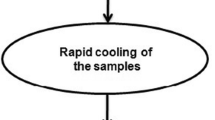Abstract
A new shell casting process, with the adoption of the foam pattern of lost foam casting (LFC) as prototype and the combination of the thin shell fabrication technology of investment casting and vacuum and low-pressure casting process, was proposed for manufacturing complicated and thin-walled aluminum and magnesium alloy precision castings. Loose-sand uniting vacuum was used in the new process to further reinforce the thin shell, and the new process proves to be a process with simple process, low cost, and high thin shell strength. Because the molten metal filling and solidification are completed under air pressure and vacuum level, the filling capability and feeding capacity of the molten metal are greatly improved, and the castings become denser. This paper mainly investigated the fabrication technology of thin shell based on foam pattern prototype, the removing foam and roasting shell process and vacuum and low-pressure casting process. The few-layer compound thin shell of silica sol–sodium silicate was adopted for the new process. Removing foam pattern was carried out at 250°C for 30 min, and the shell was roasted at 800°C for 1 h. Combined with the vacuum and low-pressure casting process, this new shell casting process has successfully produced thin wall and complex aluminum and magnesium alloy parts with high quality. In addition, comparisons in terms of filling ability, microstructure, mechanical properties, porosity, and surface roughness among this new shell casting, gravity casting, and LFC were also made to show the characterization of this new shell casting process.
Similar content being viewed by others
References
Wang YC, Li DY, Peng YH (2007) Numerical simulation of low pressure die casting of magnesium wheel. Int J Adv Manuf Technol 32(3–4):257–264. doi:10.1007/s00170-005-0325-1
Wen JL, Yang YK, Jeng MC (2009) Optimization of die casting conditions for wear properties of alloy AZ91D components using the Taguchi method and design of experiments analysis. Int J Adv Manuf Technol 41(5–6):430–439. doi:10.1007/s00170-008-1499-0
Luo AA (2002) Magnesium: current and potential automotive applications. JOM 54(2):42–48
Cho CY, Uan JY, Lin HJ (2005) Surface compositional inhomogeneity and subsurface microstructures in a thin-walled AZ91D plate formed by hot-chamber die casting. Mater Sci Eng A 402(1–2):193–202. doi:10.1016/j.msea.2005.04.043
Chiang KT, Liu NM, Tsai TC (2009) Modeling and analysis of the effects of processing parameters on the performance characteristics in the high pressure die casting process of Al–SI alloys. Int J Adv Manuf Technol 41(11–12):283–292. doi:10.1007/s00170-008-1559-5
Kim IK, Kang TH, Kim YS, Jeong YD, Kwak (2004) Analytic and experimental method for making magnesium alloy products based on an injection moulding process. Int J Adv Manuf Technol 23(7–8):566–571. doi:10.1007/s00170-003-1730-y
Fu PH, Luo AA, Jiang HY, Peng LM, Yu YD, Zhai CQ, Sachdev AK (2008) Low-pressure die casting of magnesium alloy AM50: response to process parameters. J Mater Process Technol 205(1–3):224–234. doi:10.1016/j.jmatprotec.2007.11.111
Kim YH, Choi JC, Yoon JM, Park JH (2002) A study of the optimum reheating process for A356 alloy in semi-solid forging. Int J Adv Manuf Technol 20(4):277–283
Seo PK, Kang CG, Lee SM (2009) A study on reheating characteristics for thixo die casting process with electromagnetic stirring and extruded aluminum alloys and their mechanical properties. Int J Adv Manuf Technol 43(5–6):482–499. doi:10.1007/s00170-008-1730-z
Cheah CM, Chua CK, Lee CW, Feng C, Totong K (2005) Rapid prototyping and tooling techniques: a review of applications for rapid investment casting. Int J Adv Manuf Technol 25(3–4):308–320. doi:10.1007/s00170-003-1840-6
Liu XJ, Bhavnani SH, Overfelt RA (2007) Simulation of EPS foam decomposition in the lost foam casting process. J Mater Process Technol 182(1–3):333–342. doi:10.1016/j.jmatprotec.2006.08.023
Liu ZL, Hu JY, Wang QD, Ding WJ, Zhu YP, Lu YZ, Chen WZ (2002) Evaluation of the effect of vacuum on mold filling in the magnesium EPC process. J Mater Process Technol 120(1–3):94–100
Kumar S, Kumar P, Shan HS (2008) Effect of process parameters on impact strength of Al-7% Si alloy castings produced by VAEPC process. Int J Adv Manuf Technol 38(5–6):586–593. doi:10.1007/s00170-007-1197-3
Kannan P, Biernacki JJ, Visco DP (2007) A review of physical and kinetic models of thermal degradation of expanded polystyrene foam and their application to the lost foam casting process. J Anal Appl Pyrolysis 78(1):162–171. doi:10.1016/j.jaap. 2006.06.005
Jiang BJ (2004) Investment casting. China Machine, Beijing
Jones S, Yuan C (2003) Advances in shell moulding for investment casting. J Mater Process Technol 135(2–3):258–265
Adamczyk Z, Jachimska B, Kolasinska M (2004) Structure of colloid silica determined by viscosity measurements. J Colloid Interf Sci 273(2):668–674. doi:10.1016/j.jcis.2004.01.008
Mi GF, Wang KF, Liu XY, Jia BQ (2007) The research on pattern removing technique of EPS precision casting. Foundry 56(8):828–831
Ashton MC, Sharman SG, Brookes AJ (1984) Replicast CS (Ceramic Shell) process. Mater Design 5(4–5):66–75. doi:10.1016/0261-3069(84)90159-6
Fan ZT, Dong XP, Huang NY, Hu M, Tian XF, Wu HB (2002) Mg (Al) alloy low pressure casting under vacuum process and equipment, China Patent, ZL02 1 15638.7
Li JQ (2008) Study on technology optimization and quality control of low-pressure expendable pattern casting process for magnesium (aluminum) alloy. Dissertation, Huazhong University of Science and Technology, Wuhan, China
Author information
Authors and Affiliations
Corresponding author
Rights and permissions
About this article
Cite this article
Jiang, W., Fan, Z., Liao, D. et al. A new shell casting process based on expendable pattern with vacuum and low-pressure casting for aluminum and magnesium alloys. Int J Adv Manuf Technol 51, 25–34 (2010). https://doi.org/10.1007/s00170-010-2596-4
Received:
Accepted:
Published:
Issue Date:
DOI: https://doi.org/10.1007/s00170-010-2596-4



